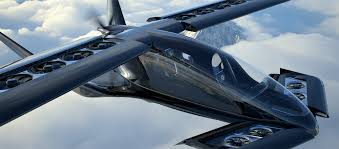
Breaking News
 James O'Keefe: My entire speech at AmericaFest 2025. We're not stopping. Join us to expose..
James O'Keefe: My entire speech at AmericaFest 2025. We're not stopping. Join us to expose..
 U.S. vs. Chinese Military Comparison – Focus on Asia-Taiwan Scenario
U.S. vs. Chinese Military Comparison – Focus on Asia-Taiwan Scenario
 DoJ Sues Four More States for Failing To Produce Voter-roll Data
DoJ Sues Four More States for Failing To Produce Voter-roll Data
 World's Largest Aviation Giant Abandons Google Over Security Concerns
World's Largest Aviation Giant Abandons Google Over Security Concerns
Top Tech News
 Perfect Aircrete, Kitchen Ingredients.
Perfect Aircrete, Kitchen Ingredients.
 Futuristic pixel-raising display lets you feel what's onscreen
Futuristic pixel-raising display lets you feel what's onscreen
 Cutting-Edge Facility Generates Pure Water and Hydrogen Fuel from Seawater for Mere Pennies
Cutting-Edge Facility Generates Pure Water and Hydrogen Fuel from Seawater for Mere Pennies
 This tiny dev board is packed with features for ambitious makers
This tiny dev board is packed with features for ambitious makers
 Scientists Discover Gel to Regrow Tooth Enamel
Scientists Discover Gel to Regrow Tooth Enamel
 Vitamin C and Dandelion Root Killing Cancer Cells -- as Former CDC Director Calls for COVID-19...
Vitamin C and Dandelion Root Killing Cancer Cells -- as Former CDC Director Calls for COVID-19...
 Galactic Brain: US firm plans space-based data centers, power grid to challenge China
Galactic Brain: US firm plans space-based data centers, power grid to challenge China
 A microbial cleanup for glyphosate just earned a patent. Here's why that matters
A microbial cleanup for glyphosate just earned a patent. Here's why that matters
 Japan Breaks Internet Speed Record with 5 Million Times Faster Data Transfer
Japan Breaks Internet Speed Record with 5 Million Times Faster Data Transfer
Cavorite X7 makes history with first fan-in-wing transition flight

The best part is that this particular aircraft is meant to be just that, a conventional aircraft – that just happens to be able to take off and land vertically like a helicopter.
It works by having 14 fans embedded within the wings. Five per main wing with a pair in each forward canard. Horizon designed a clever patented mechanism that allows the wing surfaces to slide open for vertical lift from the battery-powered fans, and slide closed as the X7 transitions to forward winged-flight, like a normal plane, with a gas-powered turbine engine powering the rear push-prop.
Using this system, the turbine would also charge the power-hungry fan system mid-flight, giving you a full battery when you arrive at your destination. And this is one of the important bits: Being able to charge while in flight means quick turnarounds. Be it rescue missions or ferrying people across town and back. Topped-up batteries at your destination will give you the choice to land conventionally or simply toss the X7 into hover mode and land anywhere you can fit a 50-ft (15-m) wingspan and 38-foot (11.6-m) fuselage.
That means almost any H1-H3 rated helipad, aircraft carrier, hospital roof, ski resort, you name it – as long as the final approach and takeoff area (FATO) is 1.5 times the overall length of the X7 and the touchdown and lift-off area (TLOF) weight isn't exceeded.
The Cavorite – named after the fictional anti-gravity substance from H.G. Wells' 1901 book The First Men in the Moon – is designed to carry six passengers plus a pilot. With a maximum gross weight of 5,500 lbs (2,500 kg), it can haul up to 1,500 lb (680 kg) of cargo for vertical takeoffs, or 1,800 lbs (815 kg) for conventional runway launches.
Because it can operate as a conventional plane, the X7 will be rated for both instrument flight rules (IFR) and visual flight rules (VFR) operations, capable of handling all weather conditions – including known icing conditions. If certified, it will become the very first in its class to have such a rating.
Also, unlike most air taxis we've seen, the Cavorite X7 is built for serious speed and range. Horizon says it'll be good for a 288-mph (463-km/h) cruising speed with an impressive 500-mile (800-km) range with reserves. That's around five times further than competitor Archer Aviation's all-electric Midnight eVTOL.
There is some competition, however, as last year, Joby put a hydrogen-electric variant of its flagship, five-seat, tiltrotor "hexaprop" S4 air taxi to the test, completing an unprecedented 523-mile (841-km) non-stop flight ... with only water for emissions. But that was a one-off (perhaps more to come though?). The standard all-electric S4 has a cruise speed of 200 mph (322 km/h) and a range of up to 150 miles (241 km) before it needs recharging.

 Advanced Propulsion Resources Part 1 of 2
Advanced Propulsion Resources Part 1 of 2

